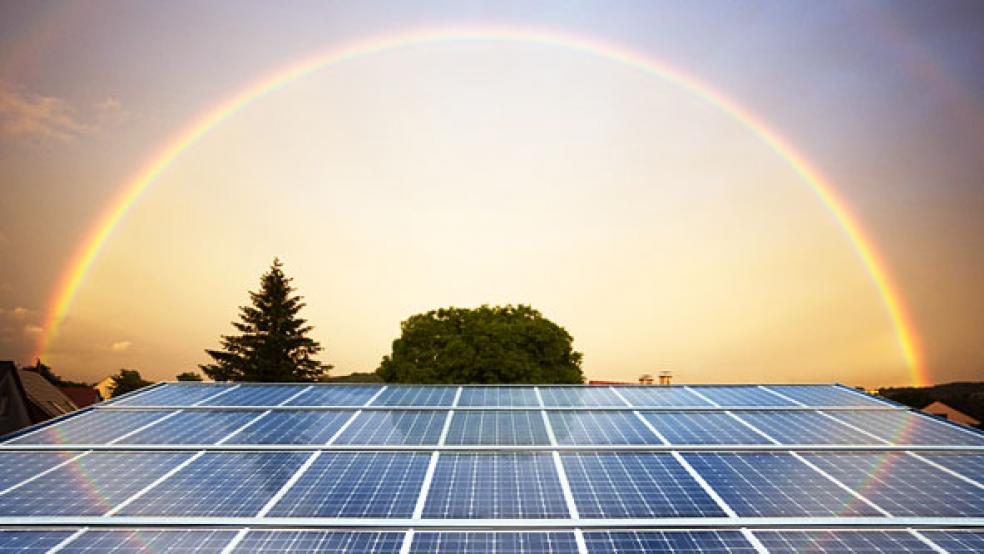Rising gasoline prices are again spotlighting President Obama’s energy prescriptive -- one of the most dangerous policies embraced by his administration. While he urges Americans to “place your bets on a clean-energy-future,” he is asking them to accept a heavy tax on our economy. When Obama claims, “We can’t rely on the fossil fuels from the last century,” he reveals an outdated grasp of our country’s energy profile. How ironic that this “new generation” leader is so behind the times.
A new report from Robert Bryce of the Manhattan Institute details the harm done by the fanciful quest for clean energy at any price. Mr. Bryce has studied the impact of so-called “renewable portfolio standards” (RPS) – the kind of directive that Mr. Obama wants to set for the entire nation -- on the 29 states that have adopted these required minimum mandates for “green” energy. He finds that forcing utilities to buy wind and solar energy drives up electricity costs and slows growth. Specifically, in the states adopting RPS, electricity costs were on average 32 percent higher than in states without such mandates. In coal-dependent states, the damage is even worse; in the past decade, those regions have suffered a 54 percent hike in electricity costs.
In his 2011 State of the Union address, President Obama called for a renewable portfolio standard for the entire country – 80 percent to come from clean energy by 2035. Can our country afford to ladle sharply higher power costs on citizens and businesses? Those pushing these demands are clueless. They have not been required to produce cost-benefit analyses of these shifts to clean energy. In other words, we are flying blind even as we are well on our way to a country-wide mandate. Today, Bryce says, some two-thirds of the country’s population is impacted by these green mandates. As the policy spreads, the damage will grow.
As utilities scramble to comply with the new directive, they are signing up green power at a 50 percent premium to natural gas.
Consider California, which naturally has the most ambitious program – requiring utilities to derive fully one third of their power from renewables by 2020. Bryce reports that the California Public Utilities Commission estimated that the state would need to invest some $115 billion to adapt to the regulations – or $3,100 for every resident of the state.
California has already been hard-hit by the financial and housing crisis; unemployment is above the national average, the state faces gaping budget gaps and already suffers some of the highest electricity costs in the country. As utilities scramble to comply with the new directive, they are signing up green power at a 50 percent premium to natural gas. Imagine what these cost increases will mean for Californians.
President Obama took office cherishing a rosy view of how he could transform our economy to one reliant on wind and sun, shucking off our messy dependence on dirty coal and Arab-controlled oil. He has stuck to this vision, even as new technologies have drastically changed the economics and even the cleanliness of fossil fuels.
Experts now estimate recoverable reserves of natural gas liquids and crude oil at 1.2 trillion barrels – sufficient to power the world for 38 years
Coal has been a key target of the RPS laws and by the White House even though it remains a source of cheap electricity for some 45 percent of the country and even though coal-fired plants have made enormous progress in cleaning up their operations. Over the past 40 years, Peabody Coal reports that sulfur dioxide and nitrogen oxide emissions have been reduced over 80 percent; another 20 percent decline will be achieved over the next three years.
Meanwhile, after decades of anxiety over the eventual exhaustion of global energy resources, experts now estimate recoverable reserves of natural gas liquids and crude oil at 1.2 trillion barrels – sufficient to power the world for 38 years. Shale oil and tar sands add another 10.8 trillion barrels; no one is running out of hydrocarbons any time soon.
In the U.S., the newfound abundance of natural gas is a game changer, but has failed to change Mr. Obama’s love affair with expensive alternatives. The Electric Power Research Institute reports that producing a megawatt of electricity in 2015 from natural gas will cost between $49 and $79 compared to $75 to $138 from onshore wind and $242 to $455 from solar photovoltaic. The report projects that those differentials will be roughly constant through the next decade.
Despite the costs, and in advance of more sweeping regulations, the Obama administration has persisted in toughening rules on emissions, causing the closure of low-cost coal-fired generators and a shrinkage in the amount of electricity produced from coal. The burgeoning rules could result in closing as much as 7 percent of the nation’s power production. One study suggests these changes alone could boost retail electricity costs as much as 12 percent by 2016. So much for not raising taxes on the middle class.
In fact, electricity rates have already increased dramatically, after decades of decline. Between 2005 and 2011 the average price for electricity jumped by one third. In the face of a monumental change in our natural gas supplies, and in the teeth of a sluggish recovery and continued high unemployment, it is unimaginable that President Obama clings to his fanciful quest for renewable energy. Thanks to Mr. Bryce, we now have some inkling what the cost of that quest will be – to our economy and undoubtedly to jobs. The bad news is, President Obama may not care.






